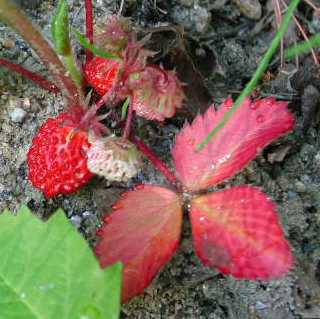Cooler, with a northerly wind. The pads blown up by it already show crimson, it is so strong, but this not a fall phenomenon yet.
H.D. Thoreau, Journal, June 30, 1859
The pads blown up by it already show crimson . . .See June 29, 1852 ("The wind exposes the red under sides of the white lily pads. This is one of the aspects of the river now”); July 30, 1856 ("I am struck with the splendid crimson-red under sides of the white lily pads where my boat has turned them, at my bath place near the Hemlocks.”); August 24,1854 ("The bright crimson-red under sides of the great white lily pads, turned up by the wind in broad fields on the sides of the stream, are a great ornament to the stream. It is not till August, methinks, that they are turned up conspicuously.”)
We walk down to the waterfall and back; detouring for a brief stop at the fort. it gets dark as we walk and sprinkles on and off. Buda is with me on a leash . the woods are damp, as it has rained every day. June is over tonight with 9 inches in burlington as opposed to a regular three. before the boardwalk we see a flash, then later hear thunder. a moderate downpour hits just after we get home, i am sweaty and happy. i come up and turn off my fan to listen to the rain.
A flash then thunder --
Home, I turn off my fan and
listen to the rain.
June 30, 2013
It is Sunday night. After dinner we walk to the view and back. The birds are the usual suspects. Two thrushes ovenbird peewee Rose breasted grosbeak great crested flycatcher. Did we hear a scarlet Tanager? I have lost the mental note of this sound
There was thunder last night and storms elsewhere in this morning heavy rain on and off with light rain in between. The stream at the junction has dried up and at the first stream crossing they are only two or three pools left for the dogs to drink. This probably will be the case for the rest of the summer. I’ve already lugged a good gallon jug of water to the view The sun is setting through the trees at the house. On the trail in the woods and on the cliffs are those orangey spots. But it has set well before we get there. I’m surprised the air is so clear and clean -- a pleasant northwest winds, thunderhead perhaps on the north horizon. I just never paid attention that it has cleared up.
The sun is setting orange And one moment I think I see different layers of orange I get one good picture that captures the colors. We sit longer than planned then head back the usual way in the dusk without headlamps And press all the way home after dark using the luminescent paint along the trails to guide us now accompanied by a myriad fireflies. We would never seen the fireflies dancing in the woods and over the trail using a headlamp
Fireflies dancing
in the night in the woods we
walk without headlamp
June 30 2019
Zphx

















